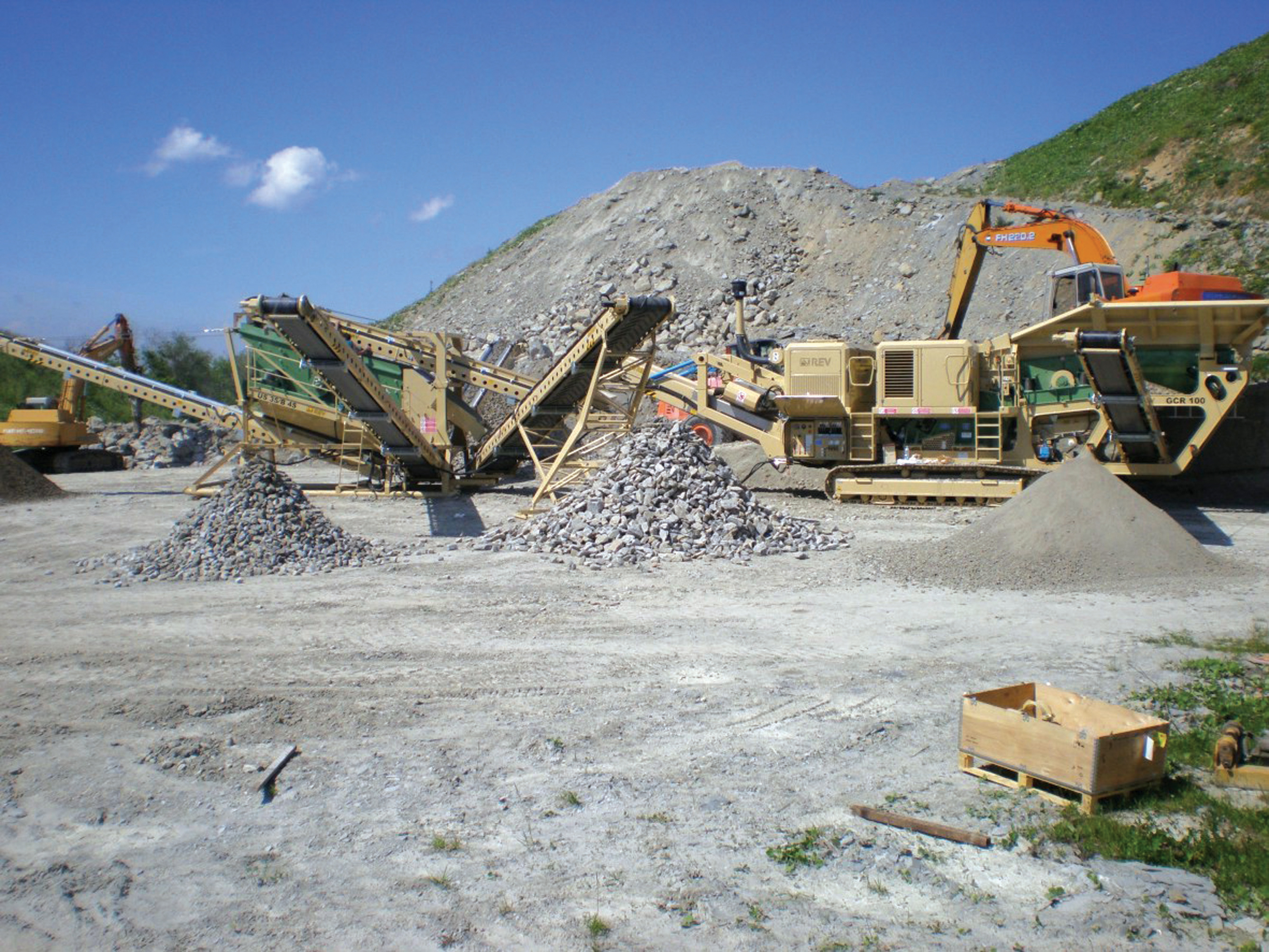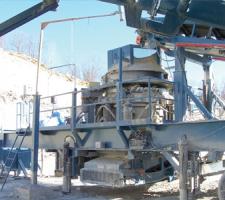
Mobile crushing and screening customers are looking to get the most from both new and existing equipment fleets. Claire Symes reports
The concept of mobile machinery is in its second phase - the first was the move to mobile machinery over the last 10 to 15 years as it was recognised that there was a place in the market for it and customers saw the benefit," said
This is a view shared by
Fixed to go
Growth in mobile machinery means that crushers that were previously designed for static plants are now also being engineered to meet the needs of the mobile market.
Maintenance issues
Rookshaw said, "The market has slowed down and customers are not replacing their machines and are aging their fleets more than before, so maintenance and servicing is becoming more important. With static machines you might have three days of material in a stockpile but with a mobile machine it may only be 20 minutes' worth, so downtime with a mobile crusher or screen could have a big impact on production.
"We are trying to offer service back up but there has to be a cost and many customers don't want to pay for it. They will quite happily spend £15,000 on a
"We want to be able to offer full service contracts - the more people that commit to this service, the more people we can put on the ground to deliver it. It is a Catch 22 situation. There is more need to service machines at the right interval.
"The same applies to spare and wear parts - customers call round for cheaper alternatives then when they are not available, they demand Sandvik to have spares in stock. This is hard to achieve when the demand is not there or variable." Lilley pointed out that availability of parts and support is an important part of after sales support. "We categorise parts to ensure critical spares are always in stock to support dealers and subsequently our customers. Terex Finlay believe that the availability of spare parts is key to maintaining customer use of genuine spare parts," he said. "We also have a service help-desk to offer advice and assistance. Through this we log any problems that can't be resolved by phone in order to learn and ensure the right advice can be given over the phone if it arises again.
"Terex Finlay is also planning to launch an internet-based service - iSupport - to allow dealers to directly pull information together." According to Brian, the design of the machine also plays a vital role in improving use on site and servicing and repair work too. "What we are trying to introduce is commonality on the control panels so that is a standard across all our models to make it easier for operators to move from one to another," he said. "People are used to intuitive controls in their cars and with electronics such as iPods and we are trying to offer that too." Nonetheless, he does not believe that machines should feature hi-tech computer control systems. "Some manufacturers offer a high level of computer control, others don't but generally it is not always wanted on site," said Brian. "We want to use the technology available but we also realise the working environment in which the machines are used and sophistication in markets does vary.
"One of the main changes has been modularisation - it allows us to get the volume through the factory more easily giving manufacturer and dealer benefits with the added bonus of being able to retrofit machines so they can grow with the customers' business and be more tailored to the specific application."
Development
While capacity and quality have been advanced in recent years, what can the quarry operator expect from the next generation of mobile crushing and screening equipment? "Screens have undergone development in the last three to four years with high amplitude screens and there aren't any further major developments expected in the short term," said Brian. "With crushing the aggregate shape has been the focus because of tighter control of aggregate specifications - this demand is driving more automatic adjustment for wear in order to produce consistent products." Examples of continuous adjustment systems are becoming more widespread on the latest machines - Italian-based
According to Lilley, the main direction with technology will be focusing on delivering more efficiency in terms of fuel use, harnessing of power and overall operation.
Brookshaw believes that the real changes will be in the way machines are bought and operated. "The basic crushing chambers are essentially unchanged and specialist wear parts are helping to deliver longer life," he said. "The market should be looking at equipment packages that deliver machines and service at a flat rate to fix their costs and I imagine that is something customer will look for that in the next three to five years. Such a service could offer replacement after a fixed period and help maximise productivity."















